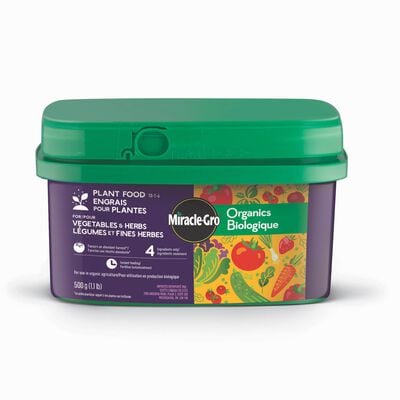
How To Start & Grow A Vegetable Garden
Simple Steps to a Vegetable Bounty
Creating a terrific vegetable garden is easy, whether you have a small yard suited to containers, or you want to create a patch big enough to feed you and your neighbours. With a little preparation and planning, you can enjoy fresh delicious vegetables year after year. Read the tips below to learn the basics of vegetable gardening.
Plan Ahead
Decide how ambitious you want to get with your vegetable garden. No matter what size you decide to make it, be sure your chosen location gets at least six hours of sunlight - the more the better. Consider whether you want to grow vegetables in the ground, raised beds, containers or a combination.
Pick Your Plants
Learn what grows best in your area and in the space you've allocated by consulting your local garden centre staff or seed catalogs. If you plant seeds, you'll find instructions for spacing and planting depth on the packets. Remember that seeds take longer than starter plants to produce vegetables. Some seeds are best started indoors up to 6-8 weeks before your last frost date.
Enrich Your Soil
Soil provides the nutrients your vegetable plants need to thrive. To make sure your soil is right for your new plants, perform a test with an affordable kit from your local home improvement store, or provide a soil sample to your local extension service. Enrich your soil if necessary by adding compost or garden soil, such as Miracle-Gro® Organics Garden Mix for Vegetables and Herbs. Work a 8 cm (3") layer into the top 15 cm (6" of your soil using a hoe or a tiller. Remember to pick up rocks and remove any weeds. Also, check how well your soil drains by observing it after it rains: do puddles appear on the surface? If so, you may want to plant in raised beds instead.
Get the Timing Right
With vegetables, timing is everything. Broccoli, carrots, lettuce, peas, and spinach like cool weather. So, you can plant them in early spring before the last expected frost. Many cool weather vegetables can be planted again in late summer for a fall or winter harvest. After the last frost date, when the soil has warmed, plant your warm-weather vegetables, like corn, tomatoes, cucumbers, and peppers.
Nourish Your Seedlings
Once your vegetable garden is planted, your plants will need regular watering and feeding. It's best to water in the morning, which allows plants to dry by nighttime to help prevent disease. Your vegetables' needs will vary; some, like eggplants and peppers, are heavier feeders than others. About a month after planting, start feeding your plants with a water soluble plant food, like Miracle-Gro® Water Soluble Tomato, Fruit & Vegetable Plant Food 18-18-21, every one to two weeks.
Prevent Weeds with Mulch
Weeds compete with your vegetables, stealing nutrients, water and sunlight, so be sure to keep them out as your vegetables grow. Apply a 8 cm (3")layer of mulch, such as Scotts® Nature Scapes® Advanced Color Enhanced Mulch around your plants to help discourage weeds by blocking growth and access to sunlight. Mulch also helps retain soil moisture and improve the aesthetics of your vegetable garden. For more dirt on gardening, read our How to Start a Vegetable Garden 101 article.
